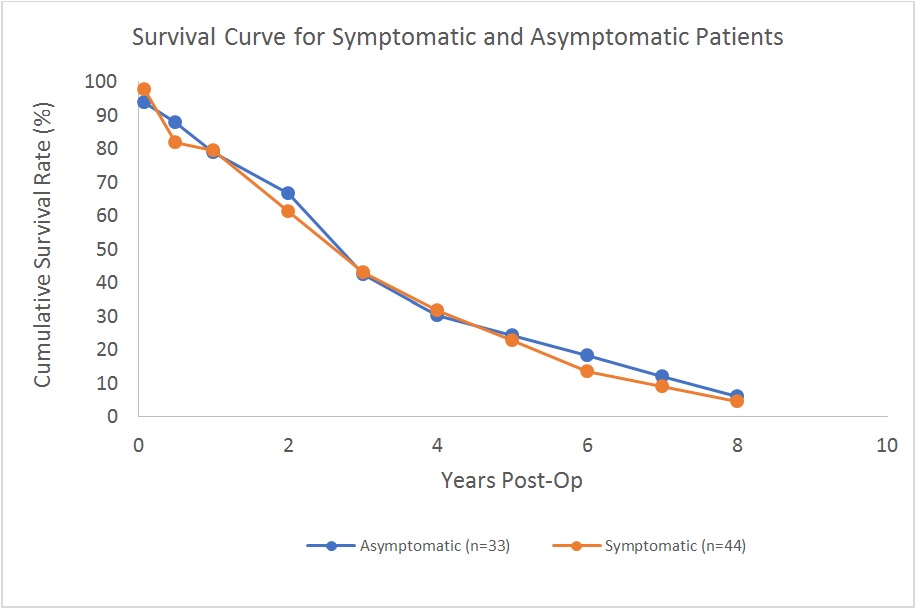Outcomes Justification for Carotid Endarterectomy in Nonagenarians
Laura Hobbs1, Andre Ramdon, MD1, Jeffrey Hnath, MD2, Chin-Chin Yeh, MD2, R. Clement Darling, III, MD2.
1Albany Medical College, Albany, NY, USA, 2The Vascular Group, Albany, NY, USA.
OBJECTIVES:
Carotid endarterectomy (CEA) is a well established procedure with prospective randomized data demonstrating the benefit of stroke prevention. With the aging of the population there is limited data published for nonagenarians, especially for asymptomatic stenosis. This study seeks to investigate both perioperative and long term mortality and morbidity for symptomatic and asymptomatic nonagenarians undergoing CEA.
METHODS: Retrospective review of a single vascular surgery groupís registry involving multiple hospitals between November 1994 to June 2017 of all primary carotid endarterectomies of patients greater than or equal to 90 years old at the time of surgery. Exclusion criterion included redo surgery and more than one side performed during the study period. Demographic data, gender, symptomatology, risk factors as well as post-operative complications were analyzed. Survival analysis was conducted using SPSS software for specific end-point of all-cause mortality. RESULTS: 77 patients (44 male, 57%) underwent CEA for symptomatic (44,57%) and asymptomatic (33,43%) internal carotid artery stenosis with a median age of 92 years old. 21 males were symptomatic and 23 were asymptomatic. Symptomatic patients included amaurosis fugax (n=3), stroke (n=16), and TIA (n=25). All CEAís were performed using the eversion technique under cervical block with selective shunting. Thirty-day morbidity for the symptomatic group were 1 (2.2%) non-fatal myocardial infarction and 1 (2.2%) ischemic stroke compared to 1 (3%) patient from the asymptomatic group having a nonfatal myocardial infarction and none with ischemic stroke. One patient of the symptomatic group required take back for hematoma evacuation. There was no statistical difference on survival based on gender (p=0.444). Symptomatic and asymptomatic groups had similar all-cause mortality outcomes (p=0.987) with mean survival of 39.4 and 38.9 months, respectively. CONCLUSIONS: The aging population adds increasing difficulty in decision making for surgical intervention on carotid stenosis. CEA in nonagenarians is associated with low rates of ischemic stroke and myocardial infarction however; enthusiasm for asymptomatic CEA in this population must be tempered by mean survival rates less than 5 years. 
Back to 2019 Abstracts
